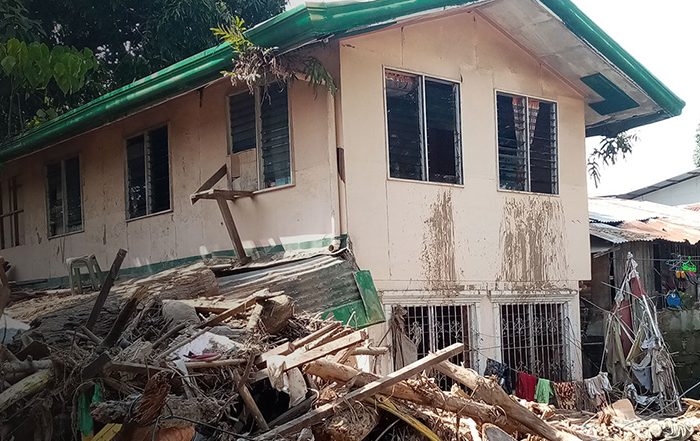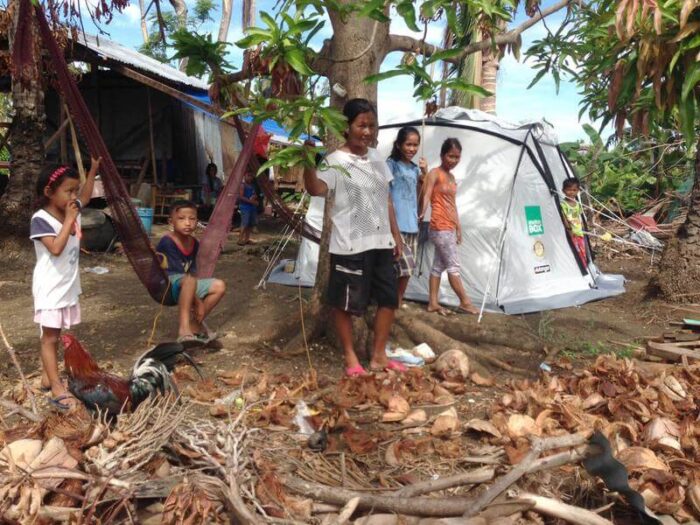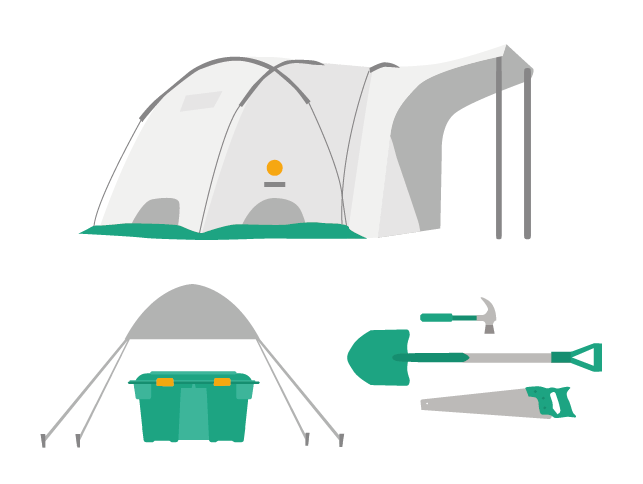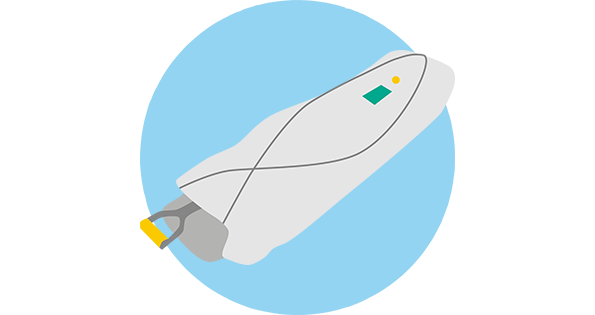
Philippines Typhoon Nalgae 2022
We supported over 1200 families in the Philippines after Typhoon Nalgae caused widespread devastation in October 2022.


We have responded to disasters in the Philippines more than any other country.
Since 2004 we have responded more than 25 times in the country to various devastating disasters such as storms, typhoons, floods, cyclones, and earthquakes.
One of the largest disasters we responded to in the Philippines was Typhoon Haiyan, known locally as Typhoon Yolanda. Haiyan was the most powerful storm in 2013 and one of the most powerful tropical cyclones of all time.
More recently, we supported families in response to the COVID-19 pandemic, providing shelter for families living in evacuation centres and with host families after the Taal volcano eruption, so they could socially distance.
Warm ocean waters, low-lying coasts, poverty and geography help explain why the Philippines is so prone to disasters.
Located just above the equator, the Philippines faces the western Pacific without much else in the way to take the force of storms before they make landfall. Those warm, equatorial waters power about 20 typhoons a year.
In recent decades, a lot of people have flocked to risky, low-lying islands – havens for cheap and crammed housing. The rapidly constructed housing and inadequate evacuation plans mean that the local population is left vulnerable when disaster strikes.
Existing houses are also unable to withstand the extreme weather conditions.
On top of everything else, the country’s location on the Pacific Ring of Fire means it is prone to earthquakes, volcanic eruptions, tropical storms and typhoons.
The country also experiences monsoon rains across the country which can lead to flooding and landslides.

The country we’ve responded to the most occasions

supported with shelter items

Cyclones, floods, conflicts, earthquakes, volcanic eruption, and a COVID-19 response
We’ve responded in the Philippines more than any other country we’ve responded to. Have a look at some key dates dating from 2000 on.
2000 – ShelterBox was founded in Helston, Cornwall.
2004 – Typhoon Nanmadol, locally known as Yoyong, hits the Philippines and ShelterBox responds soon after.
2009 – Typhoon Parma, known in the Philippines as Typhoon Pepeng, was the second typhoon to affect the Philippines within the span of a week. We supported nearly 650 families.
2011 – We supported families in Luzon following Typhoon Pedring, known locally as Nesat.
2013 – Typhoon Bopha, known in the Philippines as Pablo, devastates the Philippines. We responded in the area of Mindanao, supporting over 1,200 families.
2013 – Typhoon Haiyan, also known as Super Typhoon Yolanda, was one of the strongest tropical cyclones ever recorded. We responded with supporting nearly 3,500 families.
2014 – We supported over 1,000 families in Legazpi after Category 5 Typhoon Rammasun, also known as Typhoon Glenda.
2017 – ShelterBox Operations Philippines is established as a non-government organisation.
2018 – 2,000 families were supported with shelter kits and essential household items after Typhoon Urduja (known locally as Kai-tak) and Super Typhoon Mangkhut (also know as Ompong).
2019 – We supported 9,580 families after Tropical Storm Usman, three powerful earthquakes affecting Mindanao island, and Typhoon Kammuri.
2020 – We supported families to rebuild their homes and protect themselves from coronavirus after the Taal Volcanco erupted in January, after Typhoon Vongfong in May and after Typhoon Goni in October – November.
2021 – After Typhoon Rai (known locally as Typhoon Odette) caused mass devastation in December 2021, we supported over 20,000 people.
2022 – 1,200 families were supported with emergency shelter and essential household items after Typhoon Nalgae (known locally as Paeng).
ShelterBox Operations Philippines is an NGO, locally registered in the Philippines.
ShelterBox Operations Philippines allows us to locally store aid items in the province of Cebu so that we can respond and distribute fast and efficiently within the country, whenever disaster strikes.
This is a first for ShelterBox – setting up ShelterBox Operations Philippines is an achievement we celebrate and feel proud of.
It’s a great example of our flexible and agile model at work, which enables us to ensure we’re well-placed to reach families as quickly as possible when disaster strikes.
Learn moreTake a look at the types of shelter we distribute in the Philippines.

A selection of hardwearing tools and materials that are customised to suit the needs of each community.

By providing cash alongside our aid, we can help families choose the extra materials and support they need to rebuild.